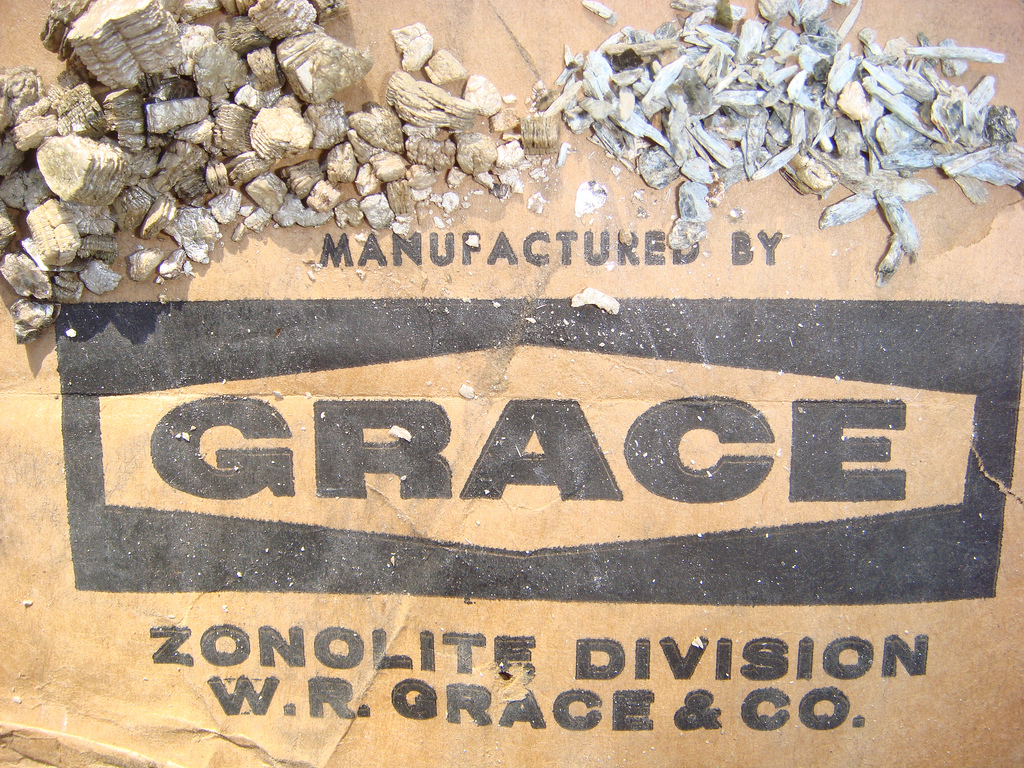Vermiculite
May or may not contain asbestos
What is it?
Vermiculite is a naturally occurring mineral. It is silver-gold to gray-brown and flat. When heated to above 1000C it puffs up and creates little air pockets. Vermiculite will not burn and in its expanded form was determined ideal and suitable for use as insulation. It looks similar to kitty litter.

What’s the concern?
Vermiculite itself is safe. However, a lot of the vermiculite that was sold in Canada contained asbestos fibers. This was largely due to cross-contamination from natural asbestos deposits at a mine where the vermiculite was sourced. A very popular brand name of this vermiculite insulation was Zonolite Attic Insulation. I often come across empty bags of Zonolite simply left in the attic after it was installed. So, the concern is whether or not the vermiculite contains asbestos. We all know asbestos is very dangerous and can cause a host of illnesses.
What to do?
If you have vermiculite in your attic or walls the first step I always recommend is to assume that it contains asbestos and treat it accordingly (safely). Step two is to get it tested; that is the only way you can determine if it contains asbestos or not. Make sure the sample that is collected for testing is gathered from various locations in order to get a good representation. Then wait for the results – you’re chances are 50/50 that it will have asbestos. If it doesn’t then you are off the hook. Although, you may still want to consider upgrading the insulation anyways because its thermal value is quite low; vermiculite has an r-value of 2 per inch while blown-in cellulose and fiberglass batts are almost double that.
So, turns out the test came back positive for asbestos …
Remain calm. As long as the asbestos fibers remain undisturbed you are safe. It is when the fibers become airborne that they can pose a health risk. This means you have a decision to make. You might be willing to live with it if you aren’t planning any major renovations that could disturb the insulation. But, be cautious – even something as simple as installing some ceiling pot-lights can disturb the vermiculite and release asbestos fibers. Sometimes the best course of action is doing nothing. Also consider the fact that the words vermiculite and asbestos will rear their ugly heads if you ever decide to sell your home and the potential buyers may wish to knock off a fair chunk of the asking price to account for the remediation work they will want to have done. And, let’s be honest, if something costs about $10,000 to fix a potential buyer is going to ask for $15,000 off the price. It is often more cost effective to fix an issue yourself, as the seller, rather than give an inflated discount off the purchase price.
If you decide to take action and have it removed there are plenty of companies out there that specialize in remediation. They will do it safely by blocking off the working areas to keep the fibers at bay. There is much preparation that goes into remediation and that is part of the reason the costs are high. You can expect a bill in the high four figures and that can easily jump into the five figure realm based on the extent of removal required (such as if it is in your walls too). When the work is done you should get a certificate of remediation from the company that guarantees the work – hang on to that piece of paper.
The final word …
If you just put an offer to purchase on a home and are looking over your inspection report and it states vermiculite is present; I suggest you get it tested asap. The test is relatively cheap (under $100) and once you find out the results you will be in a much better position to make your next decision. Until you know otherwise please assume that it contains asbestos and do not disturb it.
Some helpful links for further information:
Canadian Center for Occupational Health and Safety: Asbestos In The Home







[…] Download Image More @ rehomeinspections.com […]
[…] Download Image More @ rehomeinspections.com […]